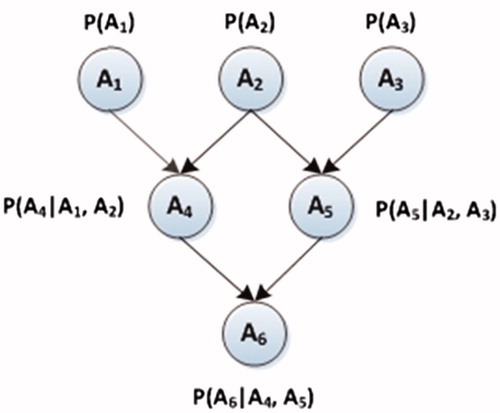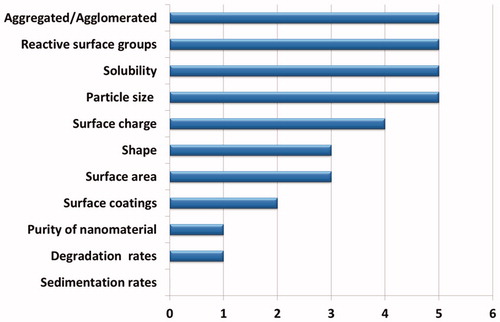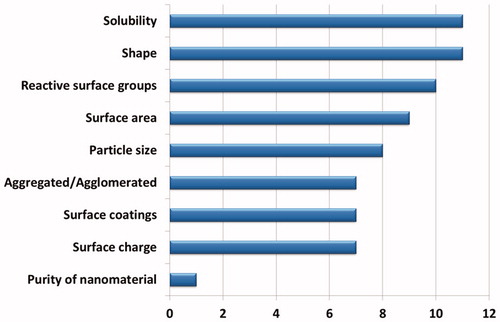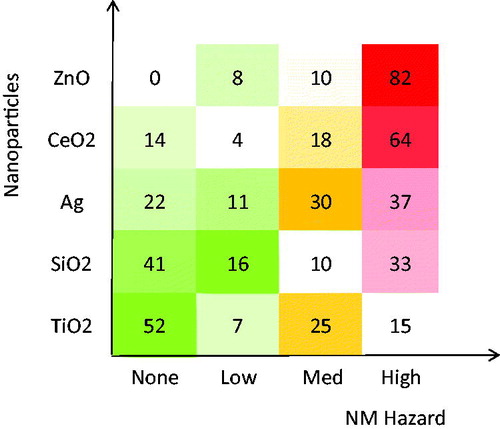Figures & data
Table 1. Grouping of endpoints for the determination of the different biological effects.
Table 2. Criteria for the classification of the biological effects.
Figure 5. Distribution of answers to the question related to the states of node “Dissolution distribution”.

Figure 6. The BN structure containing state probabilities of each node, where the green ellipses are physicochemical properties of NM, orange ellipses are biological effects, yellow ellipses are additional nodes for administration routes and study type and finally ellipse is the NM hazard node. CNS: (Reaches) central nervous system.
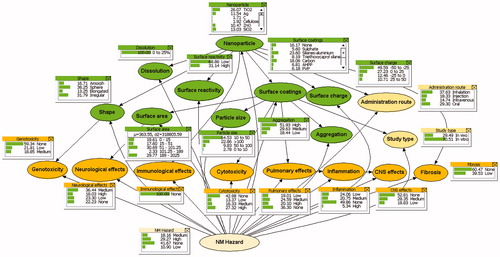
Table 3. Validation results of the BN; input values (20 cases).
Table 4. BN results; biological effects prediction.
Table 5. Sensitivity analysis showing the effect (entropy) of NM physiochemical properties on the NM hazard node and the nodes of biological effects.
Figure 8. Effect of surface charge on the prediction of the high category level of hazard potential of NMs TiO2, SiO2, Ag, CeO2, ZnO. The figures give the probabilities in percentages.
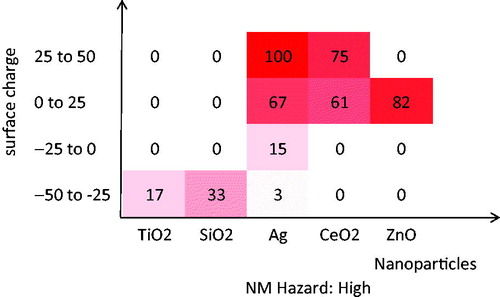
Table 6. The main NM physiochemical properties and the biological effects of 5 NMs (i.e., TiO2, SiO2, Ag, CeO2, ZnO) affecting NM hazard node.


